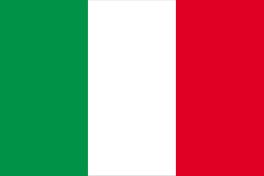Donate to Support Supercluster
Your support makes the Astronaut Database and Launch Tracker possible, and keeps all Supercluster content free.
SUPPORTSupercluster on Patreon
Your support makes the Astronaut Database and Launch Tracker possible, and keeps all Supercluster content free.
SUPPORTThis goes
to space
LARES 2
LARES 2 is a passive satellite of the Italian Space Agency.
It is the 4th flight of the LAGEOS program whose main mission, following that of LARES 1, LAGEOS-1 and 2, is to confirm the principle of general relativity and the Lense-Thirring effect- that rotating masses drag space-time around themselves.
Sphere of diameter: 36.4cm
Density 15.3g/cm3
Mass at launch: 387kg
Altitude: 5899km
Inclination: 70.16°
Also onboard are six European research CubeSats.
Courtesy of ILRS
Image Credit: ESA
On this
rocket
Vega-C
Vega-C
ESA’s Vega-C succeeds Vega, delivering increased performance, greater payload volume, and improved competitiveness. Operating from Europe’s Spaceport in French Guiana, this rocket extends Europe’s autonomy in space by supporting new mission possibilities, including return-to-Earth operations with ESA's reusable Space Rider reentry vehicle. Vega-C features major enhancements from Vega: two new solid propulsion stages, an uprated upper stage, a new fairing, and new ground infrastructure.
Vega-C is a single-body rocket nearly 35 m high with a mass at liftoff of 210 tonnes. It places about 2300 kg in a reference 700 km-polar orbit. Using a new range of payload carriers, Vega-C accommodates a mix of cargo shapes and sizes, ranging from CubeSats as small as one kilogram up to a single large payload.
Ongoing developments extend Vega-C's capabilities to include in-orbit operations and return missions using the in-development Space Rider.
Participating States in the Vega-C programme are Austria, Belgium, Czech Republic, France, Germany, Ireland, Italy, Netherlands, Norway, Romania, Spain, Sweden, and Switzerland.
Vega-C Elements
Vega-C is based on the Vega launch vehicle. As with Vega, its main elements are three solid propellant stages, an upper fourth stage powered by a reignitable liquid-propellant engine, and a payload fairing.
The fairing at the top of Vega-C is 3.3 m in diameter and over 9 m tall, doubling the payload volume available with Vega. Made of carbon fibre-polymer composite, this structure protects satellites from the thermal, acoustic, and aerodynamic stresses of liftoff and ascent through Earth's atmosphere.
The upper stage AVUM+, or Attitude Vernier Upper Module, ensures attitude control and precise orbital positioning and is designed for extended stays in space. AVUM+ has a propellant mass of 740 kg, and the main engine provides an average thrust of 2.42 kN. The reignition capability of the AVUM+ allows Vega-C to reach a range of orbits to deliver multiple payloads on a single mission. Thrusters burn several times to reach all required orbits. After the separation of all payloads, a final boost deorbits the upper stage to minimize debris left in orbit.
The third stage, Zefiro-9, is taken from Vega and burns 10 t of solid propellant.
The new Zefiro-40 second stage contains 36.2 t of solid propellant, providing an average thrust of 1304 kN.
Vega-C's P120C first stage replaces Vega’s smaller P80 to provide a significant increase in thrust at liftoff. P120C’s monolithic carbon fibre structure weighs about 8 t and carries 143.6 t of solid propellant. During its two-minute burn, this motor delivers an average thrust of 4,500 kN – equivalent to the output of 15 modern airliner engines.
The P120C also performs double duty, with either two or four of these solid fuel motors acting as strap-on boosters for ESA’s Ariane 6 launch vehicle.
Courtesy of ESA.
From this
launch site
ELV - Guiana Space Center - Kourou, French Guiana
The Ensemble de Lancement Vega (ELV) pad at the Centre Spatial Guyanais (Guiana Space Centre) was previously used to launch the Europa, Ariane 1, Ariane 2, and Ariane 3 rockets under a different name.
It hosted its first launch on November 5th, 1971 when a Europa rocket launched the STV-4 payload. It was used for the final time for an Ariane 3 rocket in 1989, after which it went unused until 2012 when Vega began flying.
Located in French Guiana, the ELV pad is part of the French and European spaceport located near Kourou on the northern tip of South America.
Guiana Space Centre
The space center has been operational since 1968 and has hosted launches for the European Space Agency (ESA), the French National Centre for Space Studies, and commercial companies Arianespace and Azercosmos.
A total of 9 different rocket types have launched from the Guiana Space Centre, including three active rockets and six retired vehicles.
The current rockets of the Guiana Space Centre include the Ariane 5 for heavy payloads, the Russian-provided Soyuz 2 for medium-mass satellites, and Vega for smaller spacecraft.
The spaceport is also preparing for the Ariane 6, Vega C, and Vega E rockets currently under development that will launch from the space centre.
Photo: European Space Agency - S. Corvaja
GET THE SUPERCLUSTER APP
THE SUPERCLUSTER PODCAST
A podcast exploring the amazing milestones that changed space history, the wildest ideas that drive our future, and every development in this new Golden Age of Space.
Donate to support
Your support makes the Astronaut Database and Launch Tracker possible, and keeps all Supercluster content free.
SupportCOPYRIGHT 2021 SUPERCLUSTER LLC



